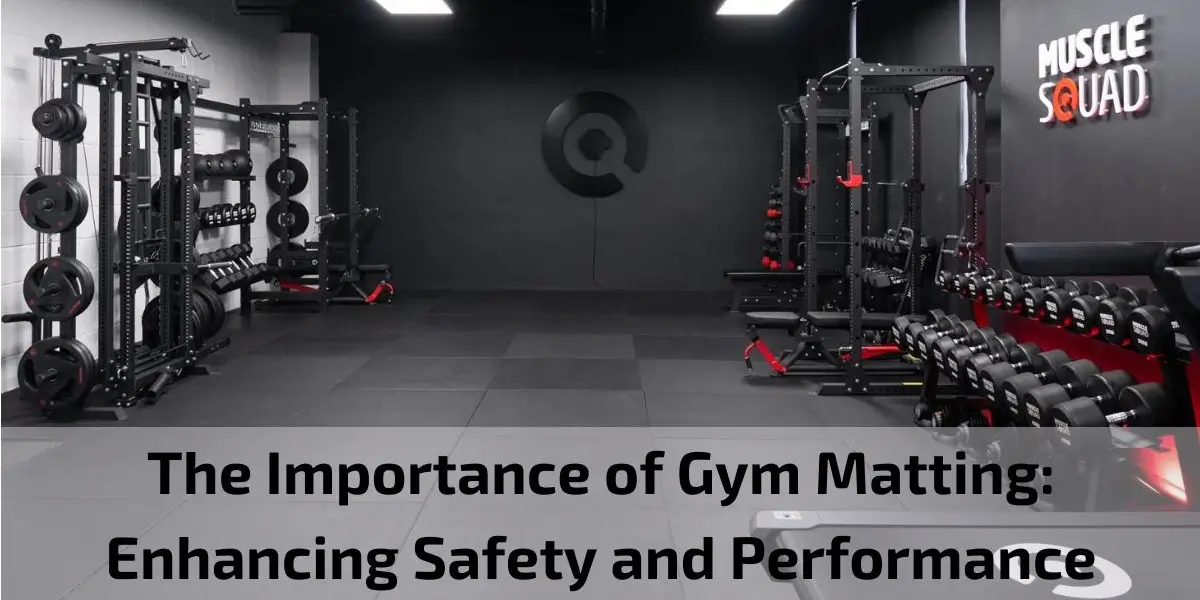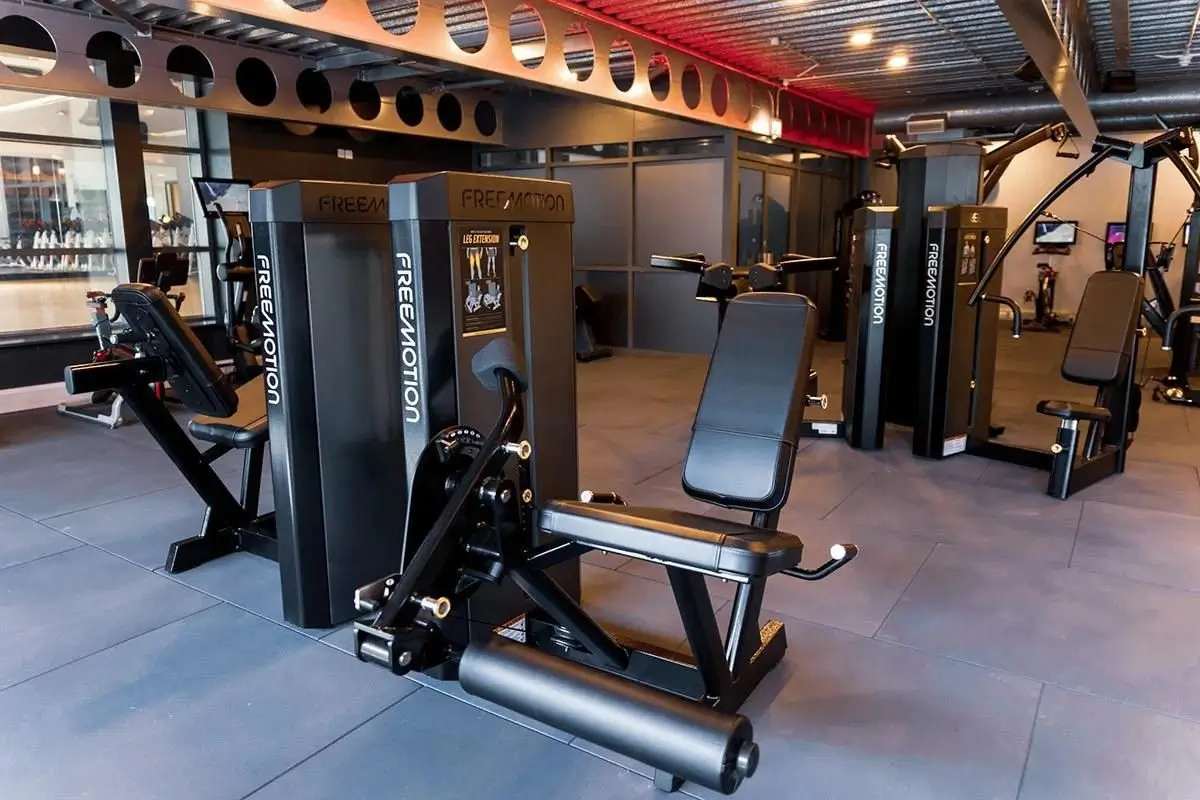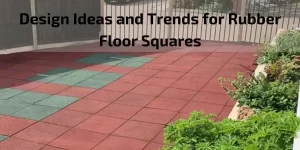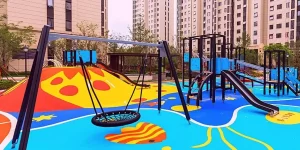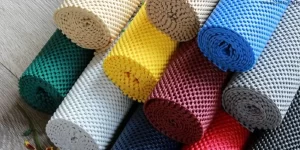Gym matting stands as an essential component in fitness facilities, offering more than just a cushioned surface for workouts. It serves as a foundational element that enhances both safety and performance for gym-goers of all levels. In the dynamic environment of a gym, where activities range from weightlifting to high-intensity cardio, the significance of proper matting cannot be overstated.
Beyond merely providing a comfortable surface to exercise on, gym matting plays a pivotal role in preventing injuries by reducing the impact on joints and muscles during workouts. It absorbs shock and minimizes the risk of slips and falls, especially in areas prone to moisture or sweat accumulation.
Furthermore, gym matting contributes to the overall performance of athletes and fitness enthusiasts by offering stability and support during exercises like weightlifting, yoga, and stretching routines. With a secure footing and reduced risk of injury, individuals can push their limits and achieve their fitness goals with confidence.
Importance of Gym Matting in Fitness Facilities
Gym matting holds a paramount significance in fitness facilities, serving as the cornerstone of safety, performance, and comfort for gym enthusiasts. Its importance transcends mere flooring, as it directly influences the overall workout experience and contributes to the well-being of gym users. Here’s why gym matting stands as an indispensable element in fitness centers:
- Safety Enhancement: Gym matting acts as a protective layer, cushioning the impact of strenuous exercises and reducing the risk of injuries. It provides a stable and slip-resistant surface, ensuring that users can perform exercises with confidence and stability, even during high-intensity workouts.
- Injury Prevention: Proper gym matting helps prevent common workout-related injuries, such as strains, sprains, and impact-related trauma. By absorbing shock and reducing pressure on joints, muscles, and ligaments, gym matting promotes safer exercise practices and minimizes the risk of accidents.
- Comfort and Support: Gym matting offers a comfortable and supportive surface for various fitness activities, including weightlifting, cardio, yoga, and stretching exercises. Its soft yet firm texture provides adequate cushioning and support, enhancing the overall workout experience and promoting proper body alignment.
- Equipment Protection: Gym matting serves as a protective barrier for gym floors and equipment, preventing damage and wear caused by heavy weights, machinery, and exercise routines. It helps maintain the integrity of the gym environment, prolonging the lifespan of both flooring and equipment investments.
- Noise Reduction: High-quality gym matting effectively absorbs noise and vibrations generated during workouts, creating a quieter and more conducive exercise environment. This is especially beneficial in commercial gyms and multi-purpose fitness spaces where noise control is essential for user comfort and satisfaction.
- Hygiene and Cleanliness: Gym matting facilitates easier maintenance and cleaning protocols, helping to uphold hygiene standards and prevent the spread of germs and bacteria. Its non-porous surface is resistant to moisture and sweat accumulation, making it easier to sanitize and disinfect between uses.
- Versatility and Adaptability: Gym matting is versatile and adaptable to a wide range of fitness activities and environments. From traditional gym spaces to home gyms, yoga studios, and rehabilitation centers, gym matting can be customized to meet the specific needs and preferences of users and facility managers.
In summary, gym matting plays a vital role in fostering a safe, comfortable, and supportive workout environment for individuals of all fitness levels. Its importance extends beyond aesthetics, as it directly impacts the overall safety, performance, and satisfaction of gym users. By prioritizing quality gym matting solutions, fitness facilities can create spaces that promote health, wellness, and enjoyment for all
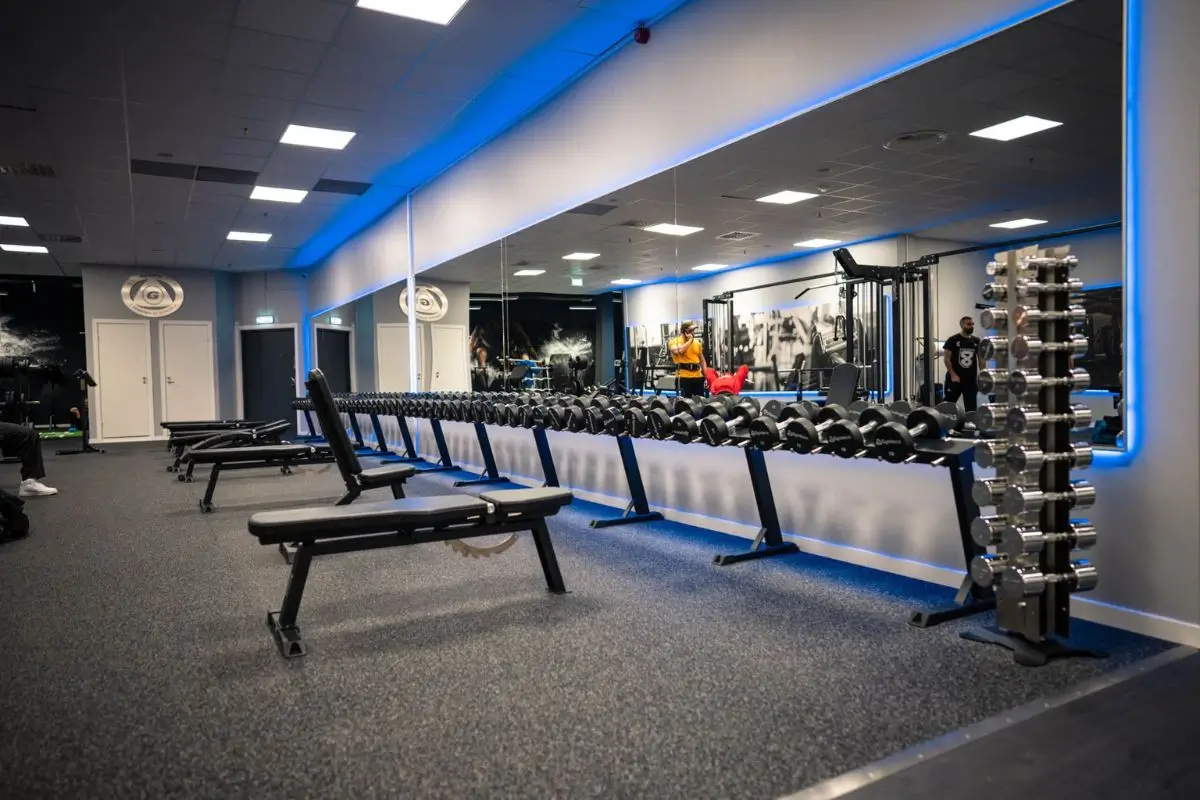
Definition and Purpose of Gym Matting
Gym matting refers to specialized flooring materials designed for use in fitness facilities, gyms, and exercise spaces. It encompasses a variety of mats, pads, and flooring systems specifically engineered to enhance safety, comfort, and performance during workouts. The purpose of gym matting extends beyond traditional flooring solutions, as it serves multiple functions essential to the fitness environment.
- Impact Absorption: Gym matting is constructed with materials that offer shock absorption properties, helping to reduce the impact on joints, muscles, and ligaments during exercises. This cushioning effect minimizes the risk of injuries and provides a safer environment for users engaging in high-impact activities such as weightlifting and plyometrics.
- Slip Resistance: One of the primary functions of gym matting is to provide a slip-resistant surface that offers traction and stability during workouts. The textured or gripped surface of the mats helps prevent slips and falls, even in areas prone to moisture or sweat accumulation. This promotes user safety and confidence during exercises.
- Comfort and Support: Gym matting offers a comfortable and supportive surface for users to perform various exercises, including stretching, yoga, and bodyweight movements. The soft yet firm texture of the mats provides cushioning for joints and muscles, reducing discomfort and fatigue during prolonged workouts.
- Equipment Protection: Gym matting acts as a protective barrier for gym floors and equipment, preventing damage and wear caused by heavy weights, machinery, and repetitive movements. It helps absorb impact and vibrations, prolonging the lifespan of both flooring and exercise equipment while minimizing noise levels in the gym environment.
- Hygiene and Cleanliness: Gym matting is designed with hygiene in mind, featuring non-porous surfaces that are resistant to moisture, bacteria, and odor buildup. This makes it easier to clean and maintain, promoting a clean and sanitary workout environment for users.
- Versatility and Adaptability: Gym matting is versatile and adaptable to various fitness activities and environments. It can be customized to fit different areas of the gym, including weightlifting platforms, cardio zones, stretching areas, and group exercise spaces. Modular matting systems allow for easy installation and configuration to suit specific needs and preferences
Factors to Consider When Choosing Gym Matting
When selecting gym matting for your fitness facility or home gym, several important factors should be taken into consideration to ensure optimal performance, safety, and longevity. By carefully evaluating these factors, you can make informed decisions and choose gym matting that meets your specific needs and preferences. Here are key factors to consider:
- Durability and Longevity: Choose gym matting materials that are durable and built to withstand the rigors of daily use in a fitness environment. Look for materials that are resistant to wear, tear, and compression, ensuring long-term durability and performance.
- Thickness and Density: Consider the thickness and density of the gym matting, as these factors impact its shock absorption and support capabilities. Thicker and denser mats provide greater cushioning and support, especially for high-impact exercises and heavy weights.
- Shock Absorption and Impact Resistance: Opt for gym matting with excellent shock absorption properties to reduce the impact on joints and muscles during workouts. Look for materials that offer superior impact resistance, helping to minimize the risk of injuries and fatigue.
- Slip Resistance and Traction: Prioritize gym matting that offers superior slip resistance and traction, especially in areas prone to moisture or sweat accumulation. Choose mats with textured or gripped surfaces that provide stability and grip underfoot, promoting user safety and confidence during exercises.
- Hygiene and Maintenance: Consider the ease of cleaning and maintenance when choosing gym matting materials. Look for mats with non-porous surfaces that are resistant to moisture, bacteria, and odor buildup, making them easy to clean and sanitize between uses.
- Environmental Considerations: Take into account the environmental impact of the gym matting materials, including their sustainability, recyclability, and eco-friendliness. Choose materials that are manufactured using sustainable practices and can be recycled or repurposed at the end of their lifespan.
- Aesthetics and Design: Consider the aesthetic appeal and design of the gym matting, as it contributes to the overall look and feel of the fitness space. Choose mats that complement the decor and ambiance of the gym while enhancing its functionality and performance.
- Cost and Budget: Evaluate the cost and budget considerations when selecting gym matting for your facility or home gym. Balance quality and performance with affordability, ensuring that you invest in mats that offer the best value for your budget.
Benefits of Investing in Quality Gym Matting
Investing in quality gym matting offers numerous advantages for fitness facilities, home gyms, and workout spaces alike. From enhancing safety and comfort to prolonging the lifespan of flooring and equipment, quality gym matting provides a range of benefits that contribute to a positive exercise experience. Here are the key benefits of investing in quality gym matting:
- Enhanced Safety: Quality gym matting is designed with slip-resistant surfaces and excellent shock absorption properties, reducing the risk of slips, trips, and falls during workouts. It provides a stable and supportive surface for users, promoting safety and confidence during exercises.
- Improved Comfort: Gym matting offers a comfortable and cushioned surface for various fitness activities, including weightlifting, yoga, and stretching exercises. Its soft yet firm texture helps reduce discomfort and fatigue, allowing users to focus on their workouts without distractions.
- Reduced Impact on Joints: High-quality gym matting helps absorb shock and impact, minimizing the strain on joints, muscles, and ligaments during high-impact exercises. It provides added support and protection, reducing the risk of injuries and discomfort during intense workouts.
- Equipment Protection: Gym matting acts as a protective barrier for gym floors and equipment, preventing damage and wear caused by heavy weights, machinery, and repetitive movements. It helps maintain the integrity of the gym environment, prolonging the lifespan of both flooring and exercise equipment.
- Noise Reduction: Quality gym matting effectively absorbs noise and vibrations generated during workouts, creating a quieter and more conducive exercise environment. This is especially beneficial in commercial gyms and multi-purpose fitness spaces where noise control is essential for user comfort and satisfaction.
- Hygienic and Easy to Clean: Gym matting is designed with hygiene in mind, featuring non-porous surfaces that are resistant to moisture, bacteria, and odor buildup. This makes it easier to clean and maintain, promoting a clean and sanitary workout environment for users.
- Customization Options: Quality gym matting comes in a variety of sizes, thicknesses, and configurations, allowing for customization to fit different areas of the gym and meet specific user needs. Modular matting systems offer flexibility and adaptability, enabling easy installation and reconfiguration as needed.
- Long-Term Cost Savings: While the initial investment in quality gym matting may be higher, it offers long-term cost savings by reducing the need for frequent replacements and repairs. Quality mats are durable and built to withstand the rigors of daily use, providing a reliable and sustainable flooring solution for fitness facilities.
Installation and Maintenance Tips for Gym Matting
Proper installation and maintenance of gym matting are crucial for ensuring its effectiveness, longevity, and safety in fitness facilities and home gyms. By following these installation and maintenance tips, you can maximize the performance and durability of your gym matting:
- Prepare the Surface: Before installation, ensure that the floor surface is clean, dry, and free of debris. Remove any existing flooring materials and repair any uneven or damaged areas to create a smooth and level surface for the gym matting.
- Select the Right Adhesive: Use appropriate adhesives and installation methods recommended by the manufacturer for securing gym matting to the floor surface. Follow the instructions carefully to achieve proper adhesion and minimize the risk of shifting or lifting over time.
- Allow for Expansion Gaps: Leave small expansion gaps between individual gym matting tiles or sections to accommodate for thermal expansion and contraction. This prevents buckling and warping of the mats and ensures a seamless and secure installation.
- Ensure Proper Alignment: Take care to align gym matting tiles or sections accurately during installation to create a uniform and cohesive surface. Use alignment guides or markers to maintain straight lines and consistent spacing between tiles for a professional finish.
- Secure Edges and Corners: Pay special attention to securing the edges and corners of gym matting to prevent tripping hazards and ensure a flush and stable surface. Use transition strips, adhesive tapes, or edge trim to secure loose edges and provide a finished appearance.
- Implement Regular Cleaning: Develop a routine cleaning schedule for your gym matting to remove dirt, dust, and sweat accumulation that can affect its appearance and performance. Use a broom, vacuum cleaner, or mop to remove debris and surface contaminants regularly.
- Use Mild Cleaning Solutions: When cleaning gym matting, use mild detergents or soap solutions diluted in water to remove stains and residues effectively. Avoid harsh chemicals, bleach, or abrasive cleaners, as they can damage the surface and reduce slip resistance over time.
- Scrub and Rinse Thoroughly: For stubborn stains or residues, gently scrub the surface of the gym matting with a soft-bristled brush or sponge. Rinse the mats thoroughly with clean water to remove any soap residue and allow them to air dry completely before use.
- Inspect for Damage: Regularly inspect gym matting for signs of wear, tear, or damage, such as fraying edges, tears, or punctures. Address any issues promptly by repairing or replacing damaged sections to maintain the integrity and safety of the flooring.
- Follow Manufacturer’s Guidelines: Consult the manufacturer’s recommendations and guidelines for installation, cleaning, and maintenance specific to your gym matting. Adhere to any instructions provided to ensure proper care and preservation of the mats for long-term performance
Conclusion
In conclusion, gym matting plays a pivotal role in creating safe, comfortable, and functional workout environments for fitness enthusiasts of all levels. From enhancing safety and performance to providing support and protection for gym floors and equipment, gym matting offers a multitude of benefits that contribute to a positive exercise experience.

